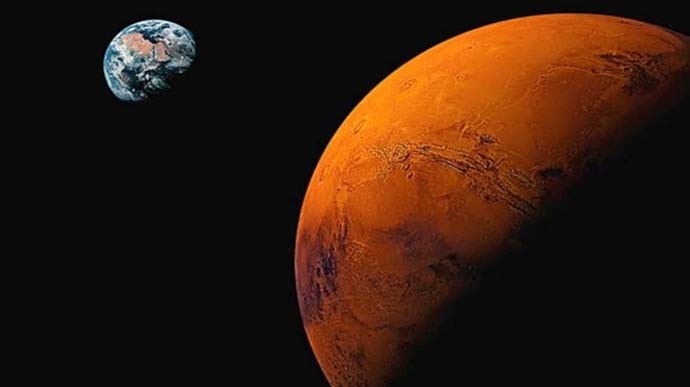Lessons for ISRO from the jolt to Chandrayaan-2

The success for Indian Space Research Organisation (ISRO) with its second mission to the Moon, called Chandrayaan-2, could not only have been an additional feather in its cap, but actually a very powerful 'statement' about India's technological prowess. However, the glitch in the final phase of this mission has dampened the spirit of every Indian.
A blip on the radar
Just four years ago, in 2014, ISRO had demonstrated to the world their technological acumen by putting the Mars Orbiter Mission (MOM) in the Martian orbit correctly. With this, we became the first country do to this in the first attempt. The history of the missions of soft-landing on the Moon is also very challenging. Till date, the success rate in this arena has been hardly 37 per cent. However, in spite of these things, the expectations from ISRO were very high owing to their track record.
Not only in India, but among the other space watchers in the world, the expectations were high. This was essentially because of the way this mission had made progress during the last 47 days to reach its final destination - the soft-landing on the lunar surface. In fact, the mission had not actually started on the right note.
It was to get space borne on July 15, but during the final phase of the countdown, the mission was called off owing to technical problems. Actually, the President of India had gone to watch this launch. But ISRO never took any pressure over the presence of a high dignitary. They cancelled the launch. They successfully fixed that problem in time and, within a week, they decided to undertake the mission. The decision was very bold, but was taken with a lot of conviction. ISRO's confidence was not born out of any jingoistic approach, but based on clear professional judgment. Chandrayaan-2 began with the flawless launch of GSLV Mk III rocket on July 22.
After the mission was put into a specific orbit, various orbit raising manoeuvres were undertaken to take the mission to a particular altitude. On August 14, the Trans-Lunar Injection (TLI) was carried out and, subsequently, the mission reached the Moon's orbit on August 20. It was a very important part of this mission and if ISRO would have failed to correctly capture the Moon's orbit, then the mission would have gone totally haywire. Interestingly, much before Chandrayaan-2 correctly captured the Moon's orbit, this mission had already captured the global imagination.
A legacy of firsts
Actually, since 2008, when India had successfully pulled off its first mission to the Moon, called Chandrayaan-1, the world has been looking at India's space organisation with a lot of admiration. The 2008 mission was followed by another successful mission to Mars in 2014. All this had made India emerge as one of the most respected space actors in the world. However, failure with soft-landing is definitely not going to take away any credit from ISRO and make it look small in any manner. This needs to be remembered by every Indian and, more importantly, by every ISRO scientist.

India fully understands the value of its rocket scientists and is fully aware that they are worthy of it. Failure is part and parcel of rocket science. The people who fail are those who try. Today, the orbiter for Chandrayaan-2 has been working perfectly and is expected to give valuable inputs in the field of moon mineralogy. It would also enhance the knowledge about the availability of water on the Moon and offer the know-how about the form it is available in. Overall, India's second mission to the Moon has suffered only a partial setback and the orbiter is expected to give lots of inputs to take the scientific experimentation ahead.
All is not lost
Now, immediately after the technical assessment and realising the nature of challenges this mission had faced, ISRO needs to plan a similar mission. It should not allow their Moon agenda to die just because of one failure. Now, it needs to check the possibility of whether only a Lander-Rover system could be launched since the orbiter is already available. There could be compatibility issues in regards to India's system. But obviously they could be overcome by proper planning. The challenge is that the life of the orbiter is one year and hence, ISRO would be required to hurry if they require to launch such a system.
ISRO could study the way China has launched its fourth mission, called Chang'e 4, to the Moon. For this mission, China had launched a relay satellite on May 20, 2018 and their Lander-Rover was launched on January 3, 2019. Certainly, the Chinese launch was a planned launch.
However, the idea is that India should quickly look at the different options in such a fashion that the available orbiter could be used to the maximum. On the whole, ISRO should use the partial failure of this mission to plan its future activities more systematically and plan only those projects which offer technical and scientific benefits.
(Courtesy of Mail Today)

